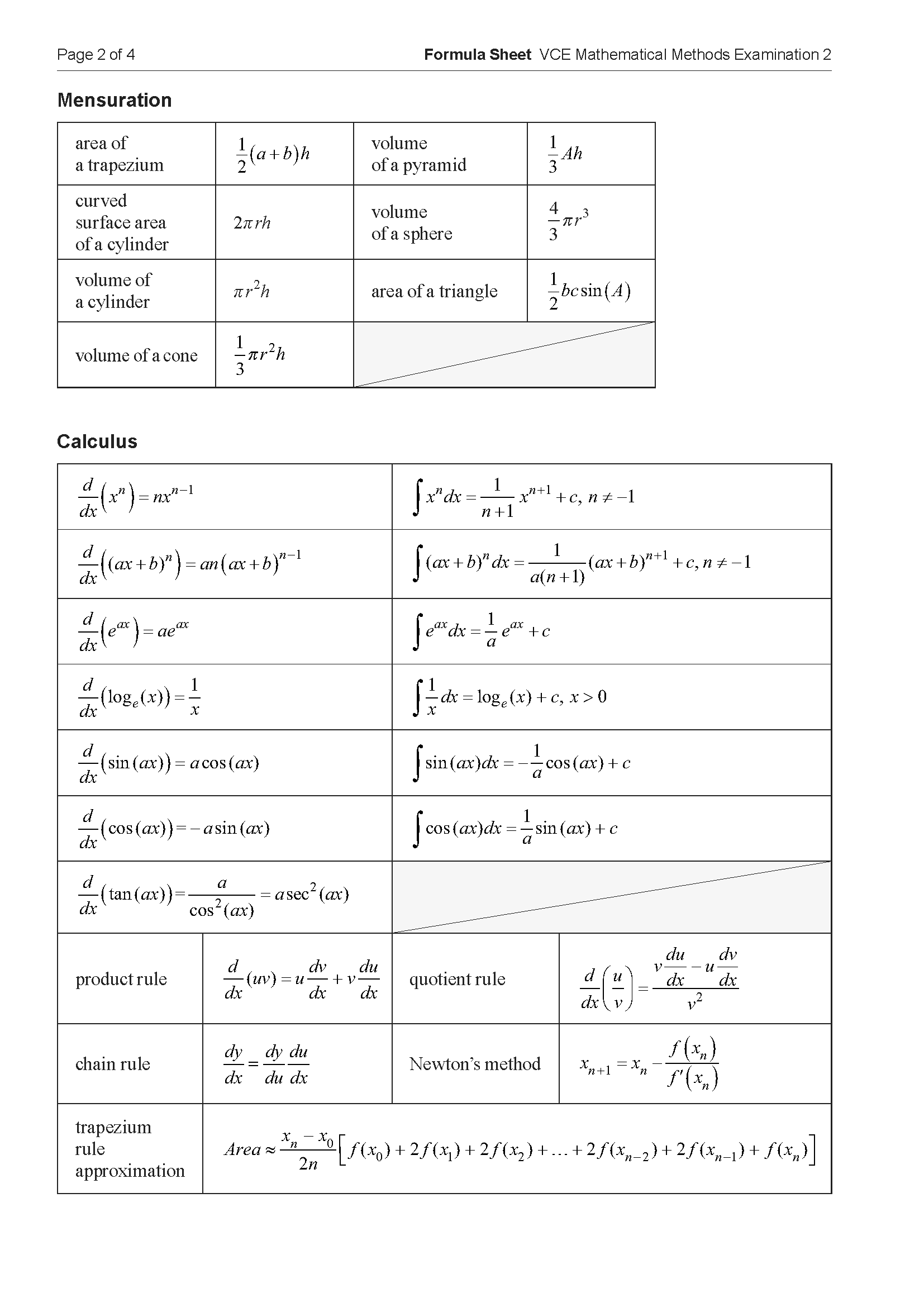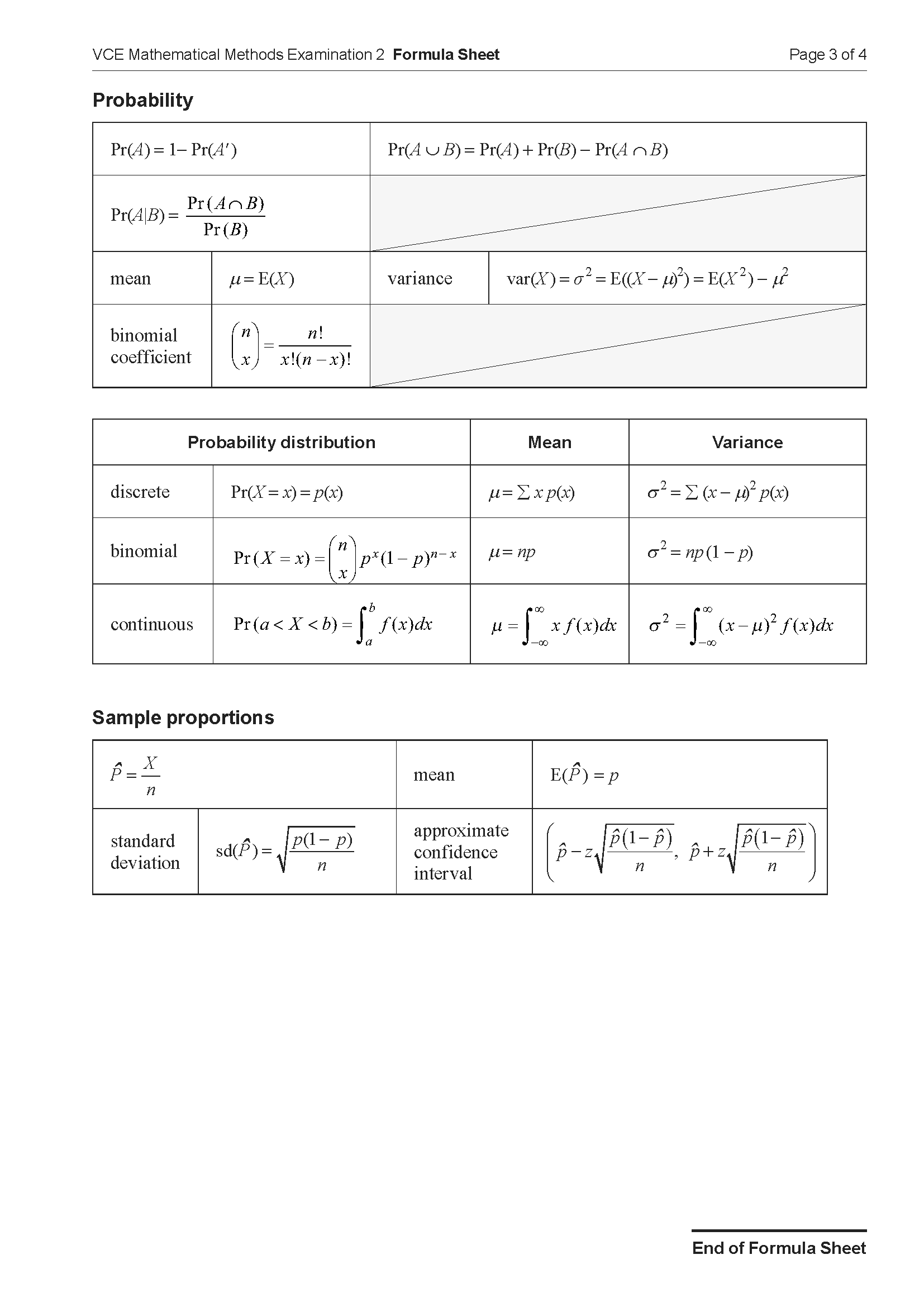VCE Maths Methods Discrete Probability Mini Test 1
Number of marks: 10
Reading time: 2 minutes
Writing time: 15 minutes
Section A – Calculator Allowed
Instructions
• Answer all questions in pencil on your Multiple-Choice Answer Sheet.
• Choose the response that is correct for the question.
• A correct answer scores 1; an incorrect answer scores 0.
• Marks will not be deducted for incorrect answers.
• No marks will be given if more than one answer is completed for any question.
• Unless otherwise indicated, the diagrams in this book are not drawn to scale.
A discrete random variable \( X \) is defined using the probability distribution below, where \( k \) is a positive real number.
| x | 0 | 1 | 2 | 3 | 4 |
|---|---|---|---|---|---|
| Pr(X = x) | 2k | 3k | 5k | 3k | 2k |
Find \( \Pr(X < 4 \mid X > 1) \).
- A. \(\frac{13}{15}\)
- B. \(\frac{11}{13}\)
- C. \(\frac{4}{5}\)
- D. \(\frac{8}{15}\)
The probability mass function for the discrete random variable \( X \) is shown below:
| X | −1 | 0 | 1 | 2 |
|---|---|---|---|---|
| Pr(\(X = x\)) | \(k^2\) | \(3k\) | \(k\) | \(-k^2 - 4k + 1\) |
The maximum possible value for the mean of \( X \) is:
- A. 0
- B. \( \frac{1}{3} \)
- C. \( \frac{2}{3} \)
- D. 1
- E. 2
Four fair coins are tossed at the same time.
The outcome for each coin is independent of the outcome for any other coin.
The probability that there is an equal number of heads and tails, given that there is at least one head, is
- A. \( \frac{1}{2} \)
- B. \( \frac{1}{3} \)
- C. \( \frac{3}{4} \)
- D. \( \frac{2}{5} \)
- E. \( \frac{4}{7} \)
A discrete random variable \(X\) has a binomial distribution with a probability of success of \(p = 0.1\) for \(n\) trials, where \(n > 2\).
If the probability of obtaining at least two successes after \(n\) trials is at least 0.5, then the smallest possible value of \(n\) is
- A. 15
- B. 16
- C. 17
- D. 18
- E. 19
The discrete random variable \(X\) has the following probability distribution.
| \(x\) | 0 | 1 | 2 | 3 |
| \(\Pr(X=x)\) | \(a\) | \(3a\) | \(5a\) | \(7a\) |
The mean of \(X\) is
- A. \(\frac{1}{16}\)
- B. 1
- C. \(\frac{35}{16}\)
- D. \(\frac{17}{8}\)
- E. 2
End of Section A
Section B – No Calculator
Instructions
• Answer all questions in the spaces provided.
• Write your responses in English.
• In questions where a numerical answer is required, an exact value must be given unless otherwise specified.
• In questions where more than one mark is available, appropriate working must be shown.
• Unless otherwise indicated, the diagrams in this book are not drawn to scale.
A card is drawn from a deck of red and blue cards. After verifying the colour, the card is replaced in the deck. This is performed four times.
Each card has a probability of \( \frac{1}{2} \) of being red and a probability of \( \frac{1}{2} \) of being blue.
The colour of any drawn card is independent of the colour of any other drawn card.
Let \( X \) be a random variable describing the number of blue cards drawn from the deck, in any order.
a. Complete the table below by giving the probability of each outcome. 2 marks
\[ \renewcommand{\arraystretch}{2} \begin{array}{|c|c|c|c|c|c|} \hline x & 0 & 1 & 2 & 3 & 4 \\ \hline \Pr(X = x) & \displaystyle\frac{1}{16} & \rule{0pt}{2.5ex} & \displaystyle\frac{6}{16} & \rule{0pt}{2.5ex} & \rule{0pt}{2.5ex} \\ \hline \end{array} \]
b. Given that the first card drawn is blue, find the probability that exactly two of the next three cards drawn will be red. 1 mark
c. The deck is changed so that the probability of a card being red is \( \frac{2}{3} \) and the probability of a card being blue is \( \frac{1}{3} \).
Given that the first card drawn is blue, find the probability that exactly two of the next three cards drawn will be red. 2 marks
End of examination questions
VCE is a registered trademark of the VCAA. The VCAA does not endorse or make any warranties regarding this study resource. Past VCE exams and related content can be accessed directly at www.vcaa.vic.edu.au

